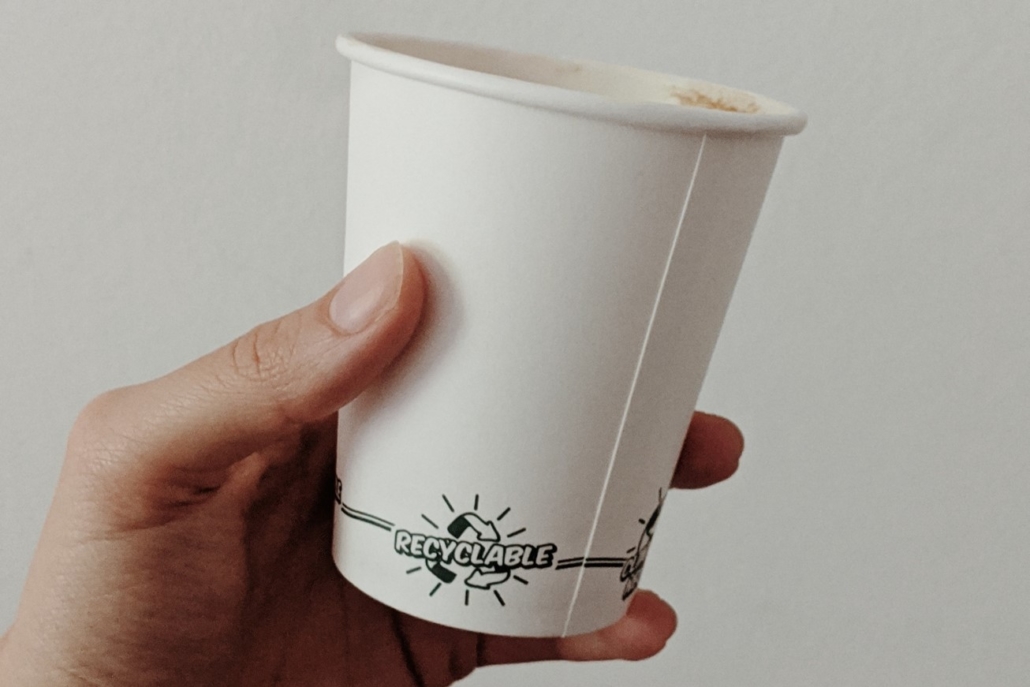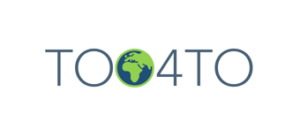Paper cups – are they really “green”?
Paper cups – easily available, fast and hygienic solutions to drinking coffee outdoors are very challenging materials in terms of sustainable utilization. Each country is trying to find ideal paper cups management. What is the best?

Paper coffee cups are available almost everywhere, on airplanes, at petrol stations, in cafes, allowing to take coffee in a fast, convenient and hygienic way. Most consumers consider paper coffee cups to be environmentally friendly. However, one should realize that a 100% paper cup could not fulfill its role. Each paper cup needs to be coated with the polymer layer, which is usually polyethylene, in order to be waterproof, fatty acid resistant and to preserve coffee aroma. It is estimated that 16 billion polyethylene coated paper cups are used each year. Their production uses 6,5 million trees, 4 billion gallons of water and energy of the amount equivalent to the amount of energy required for 54 000 homes [1]. Moreover, only 1% of the disposable cups are recycled. Low recovery of used coffee cups is related with the ineffective and inconsistent recycling schemes with the limited availability of systematic collection points and not adjusted processes of many recycling facilities to process food contaminated waste streams. Due to this fact most of the used coffee cups end at the landfills (where paper is consumed by composting microorganisms and polyethylene is breaking into smaller and smaller pieces, transforming into microscopic fragments that can be transported through whole the ecosystem) or incinerated, while they can be successfully recycled [2]. In order to shift waste management into a sustainable direction, the European Union established a target for all the EU countries to increase the recycling of packaging plastics up to 65% by 2025 and up to 70% by 2030 [3]. What is more, Australia is going to remove the use of single-use plastic by 2023 and Taiwan by 2030 [2].
Hence, the biggest problem is not related with the recycling process itself but with the collection system. Many countries, cities around the world are hardly trying to find the way for a sustainable and efficient paper cups management system.
In the UK, The Paper Cup Recovery & Recycling Group tried to increase the awareness of the population regarding paper coffee cups recycling, by increasing the access to the information, schemes and facilities for sustainable paper cups recovery. They increased the number of collection points significantly for more than 4500, municipalities that collect paper cups up to 115 and what is more they involved 21 waste collectors who actively participate in a given action [2].
Austria introduced the project “myCoffeeCup” which is based on reusable cups available to a wide range of partners willing to reduce the use of disposable coffee cups. Customers drinking coffee from the reusable cups can return them directly to the partner involved in the project or to the returning machines located at the central hubs. Moreover, there is an app created for the purpose of the project which indicates where the participating partners and returning machines are located. Cups used in these projects can be reused up to 500 times [4].
Lithuania focused on the problem of waste cups generation during outdoor festivals and events. Ms. Valdone Šuškevičė initiated a unique startup “CupCup” in order to introduce a reusable cups system in public events and cafeterias. It is already observed that it helped to reduce the amount of given waste by 0.5 t per season [5].
In order to increase the collection rate of reusable cups in Germany, an 1 euro deposit has been introduced within 100 participating businesses [2].
Similar action is introduced in Poland, where 5 PLN deposit has been introduced for the coffee cups marked with the label “Take!Cup”. Given cups are available in three sizes 0.2L, 0.3L and 0.4L. Moreover, the cup is 100% recycled and does not contain melamine. The idea is similar to the other presented, once someone is taking a cup of coffee in such a container needs to pay a 5 PLN deposit which is returned while the cup returns to one of the partner businesses or can be exchanged for another cup of coffee [6].
Both recovery and recycling of the used coffee cups is technically possible, can be economically viable and can reduce the carbon footprint by 54%. However, even the most efficient recycling or recovery process is always related with the transportation of the material to the recycling plant, additional water and energy usage, thus additional greenhouse gas emission and environmental load. Perhaps the best choice would be to change our habits and instead of taking disposable coffee cups we should bring our own ceramic or heat-insulating mugs or find 15 min a day to drink coffee in a nice place in cafes in a nice company of our friend, book or newspaper?
Written by Magdalena Fabjanowicz, Gdańsk University of Technology
References:
[1] V. Suskevice, K. Grönman; MDPI Proceedings (2019) 16, pp 58
[2] N. Triantafillopoulos, A. A. Koukoulas; BioResources (2020) 15(3), pp 7260
[3] The European Strategy for Plastics in a Circular Economy, https://www.europarc.org/wp-content/uploads/2018/01/Eu-plastics-strategy-brochure.pdf
[4] Sustainable Coffee Cups for Vienna, https://smartcity.wien.gv.at/en/mycoffeecup/ (accessed: 03.10.2021)
[5] Bio Plastic Europe, https://bioplasticseurope.eu/news-events/eu-commissioner-virginijus-sinkevicius-opens-1st-meeting-of-the-hiscap-network (accessed 07.10.2021)
[6] Take Cup, https://www.takecup.pl/ (accessed 04.10.2021)


